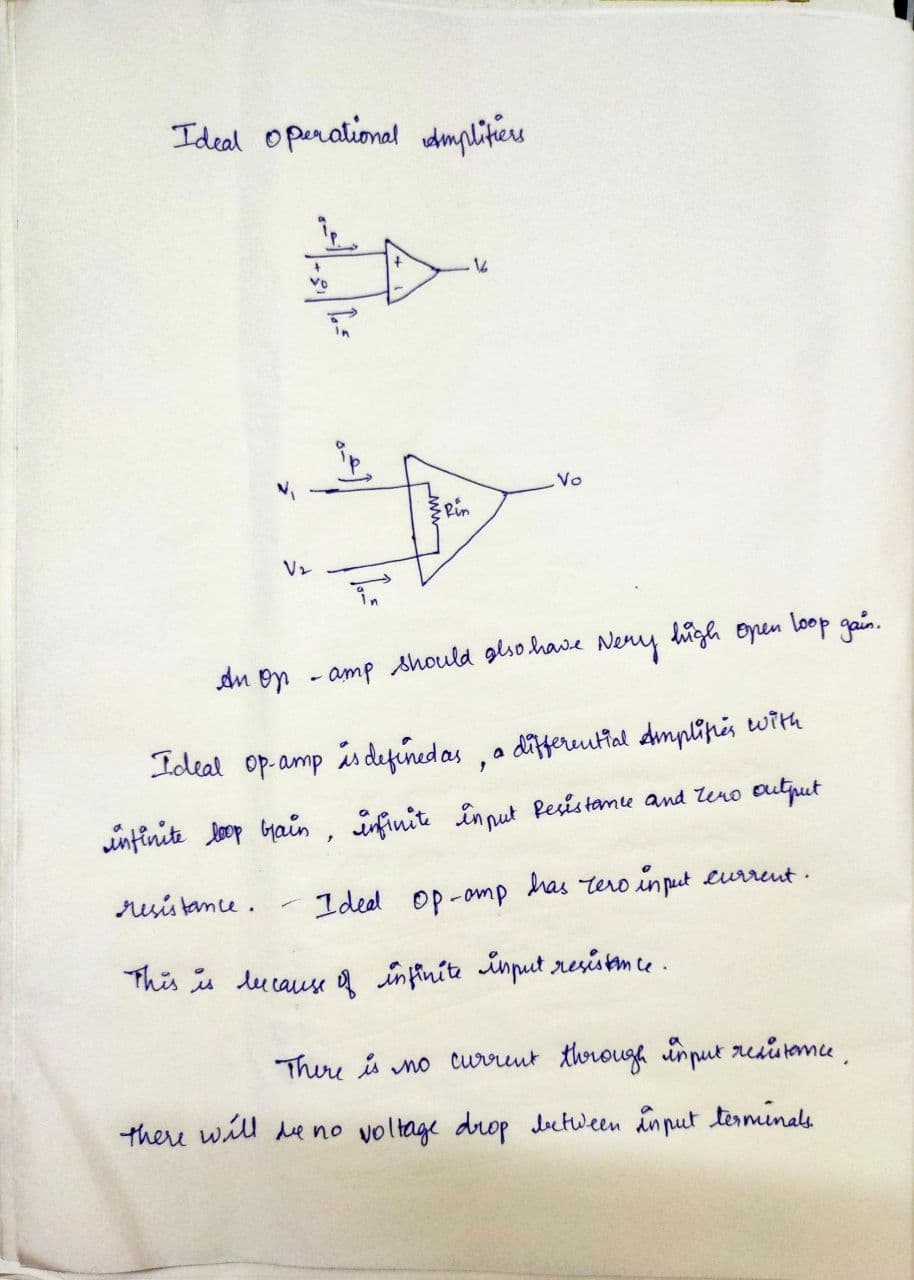What approximations are valid for the voltages and currents shown in the figure of an ideal operational amplifier. What conditions must be satisfied for these approximations?
What approximations are valid for the voltages and currents shown in the figure of an ideal operational amplifier. What conditions must be satisfied for these approximations?
Introductory Circuit Analysis (13th Edition)
13th Edition
ISBN:9780133923605
Author:Robert L. Boylestad
Publisher:Robert L. Boylestad
Chapter1: Introduction
Section: Chapter Questions
Problem 1P: Visit your local library (at school or home) and describe the extent to which it provides literature...
Related questions
Question
What approximations are valid for the voltages and currents shown in the figure of an ideal operational amplifier. What conditions must be satisfied for these approximations?

Transcribed Image Text:The image presents a diagram of an operational amplifier (op-amp) model. The op-amp is depicted as a triangle with two input terminals and one output terminal.
**Diagram Details:**
1. **Inputs:**
- There are two terminals on the left side of the triangle.
- The upper terminal is labeled with a plus sign (+) and is marked as \(i_p\) (input current).
- The lower terminal is labeled with a minus sign (−) and is marked as \(i_n\) (input current).
2. **Output:**
- A line extends from the right side of the triangle, representing the output.
- The output is labeled as \(v_o\) (output voltage).
**Figure Label:**
- The diagram is labeled as "Figure P8.3."
This diagram is typically used in electronics to illustrate how an op-amp works, showing the differential input (positive and negative terminals) and the single output.
Expert Solution
Step 1

Step by step
Solved in 2 steps with 2 images

Knowledge Booster
Learn more about
Need a deep-dive on the concept behind this application? Look no further. Learn more about this topic, electrical-engineering and related others by exploring similar questions and additional content below.Recommended textbooks for you

Introductory Circuit Analysis (13th Edition)
Electrical Engineering
ISBN:
9780133923605
Author:
Robert L. Boylestad
Publisher:
PEARSON

Delmar's Standard Textbook Of Electricity
Electrical Engineering
ISBN:
9781337900348
Author:
Stephen L. Herman
Publisher:
Cengage Learning

Programmable Logic Controllers
Electrical Engineering
ISBN:
9780073373843
Author:
Frank D. Petruzella
Publisher:
McGraw-Hill Education

Introductory Circuit Analysis (13th Edition)
Electrical Engineering
ISBN:
9780133923605
Author:
Robert L. Boylestad
Publisher:
PEARSON

Delmar's Standard Textbook Of Electricity
Electrical Engineering
ISBN:
9781337900348
Author:
Stephen L. Herman
Publisher:
Cengage Learning

Programmable Logic Controllers
Electrical Engineering
ISBN:
9780073373843
Author:
Frank D. Petruzella
Publisher:
McGraw-Hill Education

Fundamentals of Electric Circuits
Electrical Engineering
ISBN:
9780078028229
Author:
Charles K Alexander, Matthew Sadiku
Publisher:
McGraw-Hill Education

Electric Circuits. (11th Edition)
Electrical Engineering
ISBN:
9780134746968
Author:
James W. Nilsson, Susan Riedel
Publisher:
PEARSON

Engineering Electromagnetics
Electrical Engineering
ISBN:
9780078028151
Author:
Hayt, William H. (william Hart), Jr, BUCK, John A.
Publisher:
Mcgraw-hill Education,